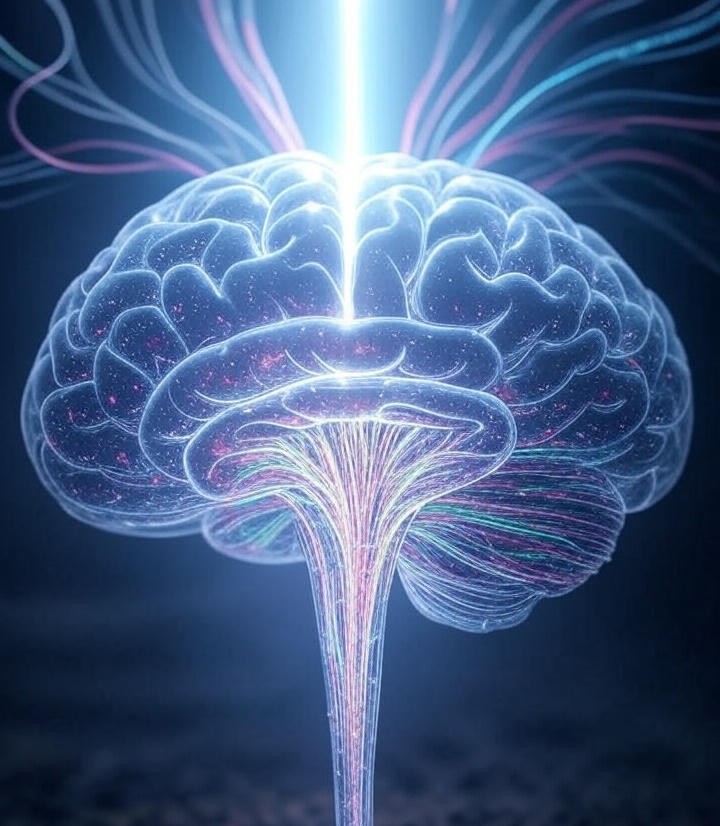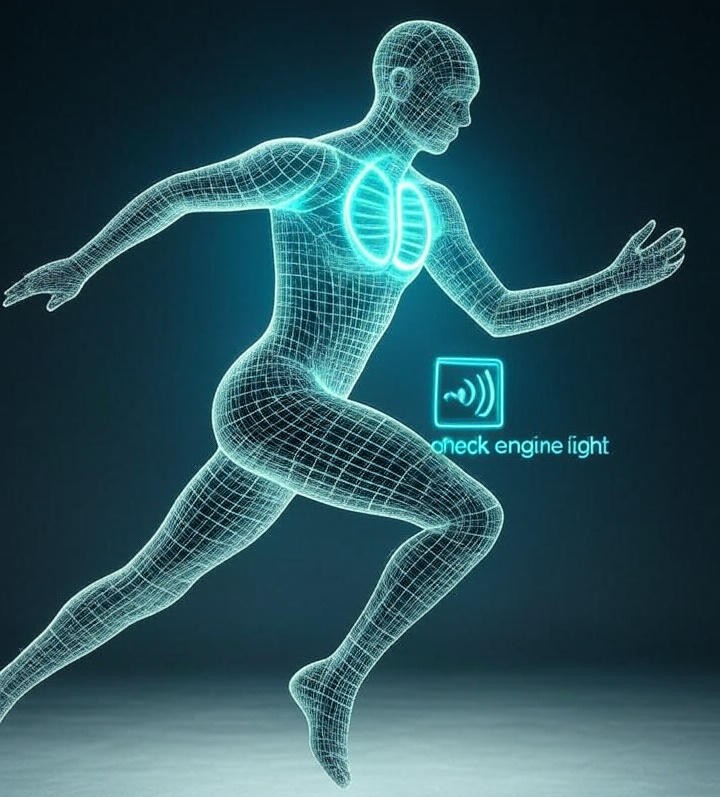Part 1: The Modern Athlete’s Glitch
A young pitcher stands on a practice mound, tablet propped on a nearby stand. After every throw, a wave of metrics washes over the screen: spin rate, velocity, release angle, arm-slot deviation, stride length. She’s been told this data is the key to unlocking the next level. Yet, with each pitch, her focus splinters. Is her arm slot too low? Was her stride too short? Is she losing velocity because of her spin rate, or is the spin rate suffering because of her release?
An hour later, her arm is tired and her mind is fried. She has more information than any pitcher in history but less clarity than ever.
She’s experiencing a system glitch, a universal paradox in modern skill development. In our quest for improvement, we’ve surrounded ourselves with a cacophony of data—a constant, overwhelming Noise. As we explored in our article, “The Cognitive Load Catastrophe,” this deluge of information leads to paralysis by analysis, actively preventing the brain from learning effectively.
But if data is the problem, it must also be the solution. The critical question is not how to gather more data, but how to find the right data. How do you isolate the one, critical variable that truly matters? How do you find the Signal in the Noise?
Part 2: Your Brain's Internal Filter: The Science of Selective Attention
Your brain is a master of filtering. Right now, it is actively ignoring the sensation of your chair, the hum of electronics in the room, and a thousand other sensory inputs so you can focus on these words. This is a powerful, intrinsic ability known as selective attention. Deep in the brainstem, a bundle of nerves called the Reticular Activating System (RAS) acts as a vigilant gatekeeper, deciding what information gets passed along to your conscious mind.
When you set a clear goal or focus on a specific problem, you are programming your RAS. It learns what you deem important and begins to actively scan your environment for matching information, bringing it to the forefront of your awareness. This is why when you decide you want a specific car, you suddenly start seeing it everywhere. The cars were always there; your brain simply started flagging them as relevant.

This neurological process reveals a profound truth about learning: your brain is already built to seek a signal in the noise. The most effective learning environments don't fight this reality; they align with it. They provide the brain with a single, unambiguous target, allowing it to devote all of its resources to that "one thing." This is where most technology fails. By presenting a dozen metrics at once, they create a dozen competing targets, short-circuiting the brain's natural filtering mechanism and creating cognitive chaos.
Part 3: Engineering the Signal: The GOAT Platform's "Check Engine Light"

The single most powerful feature of the GOAT Platform is not what it shows you, but what it doesn't show you.
Our system is built on a revolutionary intelligent analytics engine designed to do one thing with unparalleled precision: find your signal. It acts as a "check engine light" for your performance, cutting through the noise to identify the single, highest-impact flaw that is holding you back.
This is not a generic, "black box AI" response. This is the GOAT Archetype™ system.
We recognize that there is no single "correct" way to perform a skill. Every elite coach has a unique philosophy, a different way of seeing movement and diagnosing faults. Our platform is built on this principle. A coach doesn't just use our platform; they teach it. Using our proprietary "Digital DNA" system, an expert coach encodes their unique diagnostic strategy—their "Archetype"—into our engine.
The result? The platform becomes a digital twin of the coach. When a user who follows that coach gets their analysis, the feedback isn't from GOAT; it's from the coach's philosophy, scaled through our technology. The "check engine light" that illuminates a flaw in hip rotation does so because that specific coach prioritizes hip rotation as a foundational element. For another coach with a different philosophy, the system might flag an entirely different "one thing."
This is the end of impersonal, generic feedback. It provides the user with an Intelligent Connection—a direct line to a proven philosophy—and it gives the expert a guarantee that our platform is amplifying their brand, not diluting it.
Part 4: The "One Thing" Flywheel: A Framework for Mastery
Once the signal has been identified, the path to mastery becomes radically simpler and faster. This focused approach aligns with the wisdom of history's greatest performers and coaches.
The legendary basketball coach John Wooden built a dynasty not on complex plays, but on an obsessive, relentless focus on the absolute fundamentals. His first practice of every season was famously spent teaching his elite players how to put on their socks and shoes correctly to avoid blisters. By perfecting the smallest, most foundational detail, he built a base upon which greatness could be achieved.

This concept is what chess prodigy and martial arts world champion Josh Waitzkin, in his book The Art of Learning, calls "making smaller circles." Waitzkin describes learning a new skill as starting with a large, clumsy motion and, through deep focus on the core mechanics, gradually refining and condensing the movement until its potency increases and its size decreases. You master the fundamental essence before adding complexity. This deep, internalized understanding of a single component makes learning the next component exponentially easier.
The GOAT Platform is designed to power this exact flywheel:
- Diagnose: The intelligent analytics engine provides your "one thing"—the single, foundational flaw to focus on.
- Isolate: The platform directs your attention, dedicating your cognitive resources to solving that single problem.
- Repeat with Focus: Using our sensor system, you engage in deliberate practice with real-time, quantitative feedback that is contextual only to your "one thing." You're not just practicing; you are physically building a high-speed neural superhighway for that specific skill.
This approach is validated by the Constraints-Led Approach (CLA) in motor learning, a modern coaching framework where coaches intentionally manipulate task or environmental constraints to guide an athlete toward discovering their own optimal movement solution. By giving you a single flaw to focus on, our platform creates a powerful "task constraint," simplifying the learning environment and allowing your nervous system to self-organize and solve the problem with maximum efficiency.
Part 5: Conclusion: The Confidence of a Clear Plan
We started with an athlete drowning in a sea of data, overwhelmed by the noise of modern technology. The journey through the science of attention and the wisdom of master performers reveals a simple, powerful truth: the secret to accelerated learning is not addition, but subtraction. It is the art of strategic ignorance.
The greatest strength of the GOAT Platform is its ability to give you the confidence to ignore the thousand things that could be wrong and focus on the one thing that is wrong. It transforms practice from a session of anxious guesswork into a confident, targeted mission. It replaces the noise of data with the clarity of a plan.
This is the promise of the Benevolent Titan: The end of guesswork. The beginning of progress.
The path is now clear.
What is the one thing you will master next?
Find Your 1 Thing for FREE